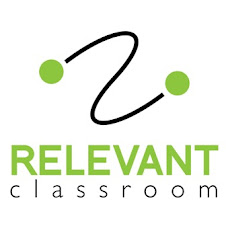Developing and maintaining a professional portfolio is a useful experience for students as they begin their careers.
A career exploration portfolio is a “beginning” version of the student’s professional portfolio. A career exploration portfolio should help students actively reflect upon their career exploration as it unfolds throughout middle and high school. In addition, a career exploration portfolio should help students practice the same skills associated with the creation and use of a professional portfolio. Here are four easy steps to help you guide students in setting up a career exploration portfolio:
Step 1: Outline the criteria for a career exploration portfolio. Some criteria we suggest:
1. Store your artifacts in a common location. Some places to call "home" include:
- A file folder
- An electronic file folder on the student’s school workspace
- A Web page created by the student to host the files
- A three-ring binder with sheet protectors and dividers
2. Include up to 6 artifacts that show others:
- …your current career interests and,
- …relevant skills you have that will help you be successful in a career.
3. Include a paragraph about each item that summarizes:
- What is the item?
- Why did you select the item for your portfolio?
- How did you improve the item before including it in the portfolio?
Step 2: Help students select artifacts to include in a career exploration portfolio. Some potential artifacts to create and include are:
- Personal Mission Statement
- Presentation about a Career Cluster that interests you
- 6-8 year career and education plan
- Results from a career interest inventory
- A journal entry or reflection on career interest inventory results
- A self-rating sheet showing how you rate yourself on career skills with a paragraph reflecting on how you have grown since you completed the self-rating sheet.
- Picture or map of the local community showing where the 16 career clusters are found locally
- Summary of an interview with an individual who has a career that interests you
Step 3: Have students create the portfolio, evaluate the artifacts and then present it for assessment. For example, you may have students present their portfolio to their parents, a counselor or an adult mentor. Use this as an opportunity to continue the conversation between the student and parents about the student’s interests, desires and plans.
It's that easy! Engage your students in starting a career exploration portfolio today!
 Are you looking for more career exploration resources? Our middle school career exploration curriculum, Engage!, offers a project based approach to career exploration. In fact, the project described here is adapted from the detailed plan included in Engage! For more information check out Engage! at www.relevantclassroom.com.
Are you looking for more career exploration resources? Our middle school career exploration curriculum, Engage!, offers a project based approach to career exploration. In fact, the project described here is adapted from the detailed plan included in Engage! For more information check out Engage! at www.relevantclassroom.com.Career Development Tip for 9.25.08

No comments:
Post a Comment